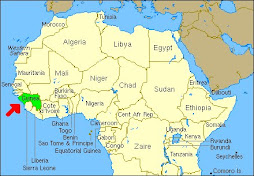I spent most of last week in a place called Twoudinò. For the non-Creole speakers among us (oh wait, that’s everyone) that translates to Hole of the North!! It is a lovely hole indeed, about an hour's drive from Cap Haitian, inland from the northern coast. I went to make house visits with the project director Fonkoze's program Chemen Lavi Miyò, or Path to a Better Life.
Watching the program in action was so interesting. I wasn’t contributing much of anything on this trip except a
We based our trip out of Twoudinò, but each day would drive 40+ minutes in some direction, on dirt roads (roads?) over streams, through ruts, up mid hills where I thought I’d have to get out and push... My favorite was when we would park, get out, and hike. Gauthier the project director, Shaila our pro from
One thing Gauthier told me that was eye-opening was that many urban Haitians don’t even realize the conditions of the rural poor. I had assumed though that most Haitians usually had a relative or two living out in the provinces. Gauthier responded no, many people in Twoudinò don’t realize what it’s like right outside their own town. That was reinforced when my co-worker back in central office accounting, a 32 year old guy, said “My family is from Jacmel. I’ve never been anywhere but
And then the people we met, the women participating in Chemen Lavi Miyò.
I’ve heard the stories but the greatest effect of this trip was to have images—in 3D—to associate with statistics. To give you a feel for the average woman we visited: those who qualify to be in this program are the poorest of the poor. They’ve been identified by their community leaders. Fonkoze also has a poverty scorecard—the participants answer a set of questions in order for us to get a basic idea of the depth of their poverty. Most of these women can’t read or write, have 5, 6… 9 kids who aren’t attending school. They have no assets—land, donkey, nothing. Some have a husband. Their houses are typically made of sticks weaved together, with mud plastered against them to form walls. Dirt floors, thatch roof, or tin if they are lucky. No toilet—go poop in a field somewhere. Maybe a mattress, that a few of the family members can sleep on, the rest get the floor. Usually a separate little shelter of sticks and thatch under which they cook. A lot of the houses leak—if it rains, the family is standing up in a corner all night not to get wet. Nearest source of drinkable water… depends. And if you run out… it’s dehydration or dysentery, when nasty water is often the only substitute.
(For those not interested in micro-finance-y things, please skip following paragraph.)
Our program is funded by an arm of the World Bank, which is also funding similar programs in
The two women I remember most vividly were some of the worst off. In one instance, the woman’s hut had collapsed. So she and her family moved into their goat pen. It was about the size of my bathroom, 5’ x 7’ and like most of the huts we saw, was divided into two miniscule rooms. A front area is where your dishes etc are kept, and a back area is for sleeping. I really have no idea how the whole family fit inside to sleep. The goats found a tree to sleep under.
The other woman who stands out in my mind had a lean-to shelter of one room, made of sticks. I had to crouch down to fit “inside.” Literally, there was hardly even room on the dirt floor for her 6 kids to sleep. The few clothes she owned for herself and the kids were hanging from parts of the sticks poking out of the wall. They’re only “inside” to sleep, the rest of the day is spent outside. She had no husband, and was rail thin, as most of the women were. Through her threadbare and holey white tank top you could see sagging breasts to her wasteline, although she was probably only 30 years old. Arms thin but strong and muscular. Hair in a few chunky braids, as was typical of all the women we saw. Before the program, I’m pretty certain she’d been begging on a nearby road, and probably still does some. She had begun planting a few random crops in her yard, and her new goats were nosing around the yard. As bad off as she was, she was one of the more lively of the women. I liked her cause she poked fun at Gauthier for having “so many women,” …all of the program participants!
A final woman I remember was, along with another program participant, planting peas in her mother’s field when we walked up. The woman was about 70 and her mother is still kicking at 104!! Under the shade of a nearby tree, the 70-year old and two other Haitian women squatted down on their heels in the dust, to talk to us. I know very few American women limber enough to manage this classic Haitian squat that these women do EVERYwhere!! It was in observing these women that I couldn’t help but think, the poorer they are, the more beautiful they are. Haitian men look alright, but the women… just blow me away. Watching her as she talked, I could hardly look away from the 70-yr. old, she was so stunningly put together. It wasn’t til I was really staring that I started to figure what makes these women so attractive… after having wondered about this for months! The high defined cheekbones—it’s all there! Their faces are just set beautifully, with broad and proportionate noses, and skin that hardly seems to age.
Coming home I was left with plenty thoughts, ideas, and hillside conversations to chew on… which I hope I don’t swallow and forget too quickly.
From the photo album:











































